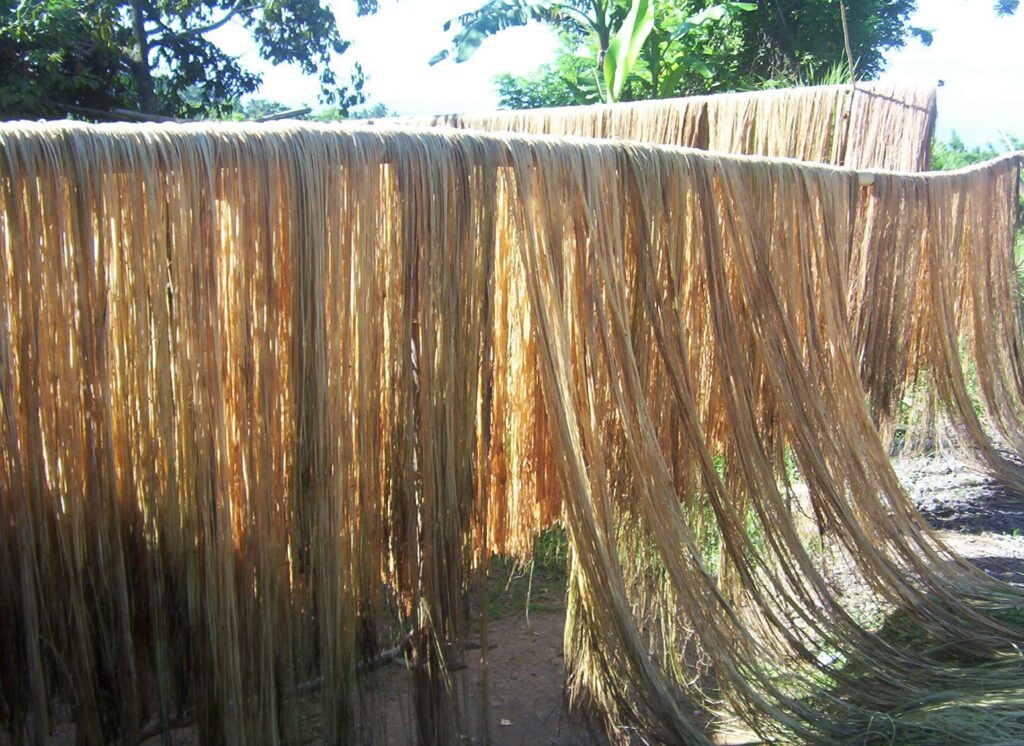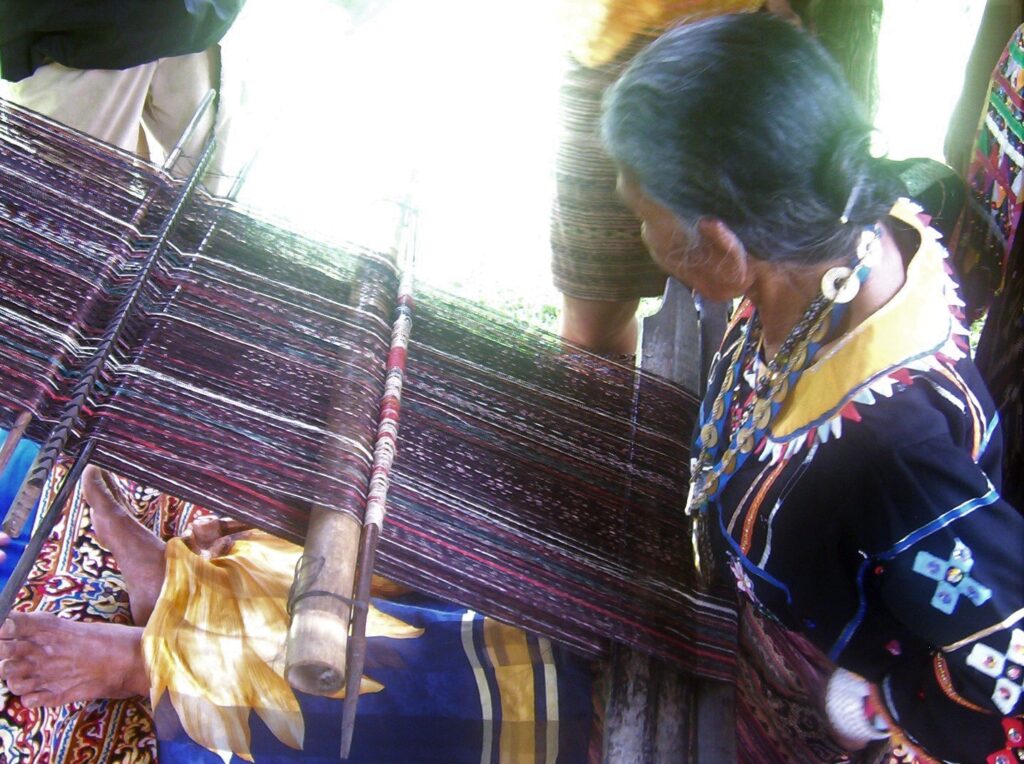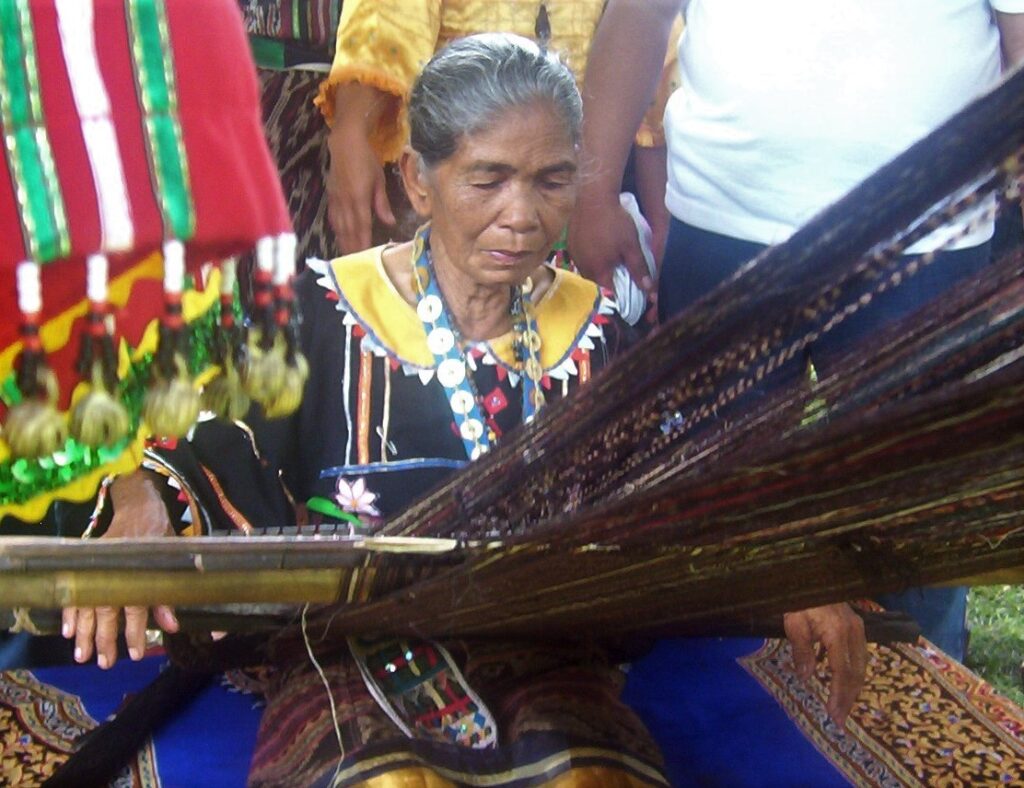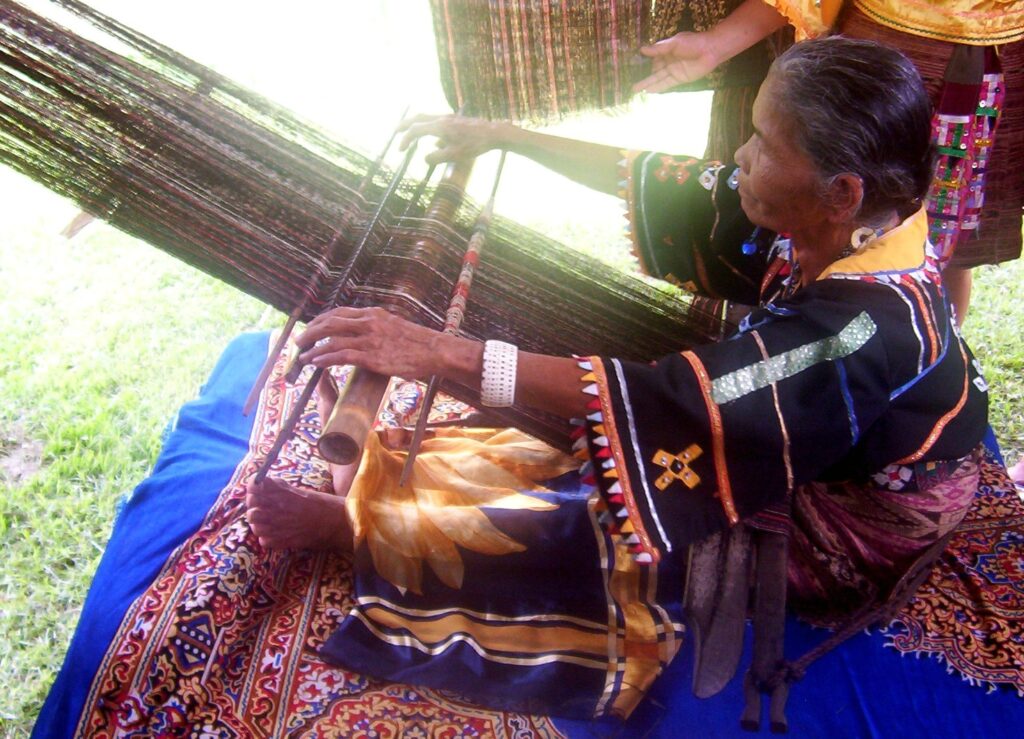Text and Photo by Henrylito D. Tacio
People from Davao del Sur never know that it has already produced a national artist. But even after her death, no one ever heard of her. In fact, the new generation of the town of Bansalan, where she was born and raised, never noticed of her passing in 2009.
We’re referring to Salinta Monon, touted to be “the last Bagobo waiver.” In 1998, the National Commission for Culture and the Arts (NCCA) recognized her as a Gawad Manlilikha ng Bayan (GAMABA) to acknowledge her priceless contribution to the country’s art and culture.
GAMABA award is the equivalent of the National Artist award given to individuals “engaged in any traditional art uniquely Filipino whose distinctive skills have reached such a high level of technical and artistic excellence.” The award hopes to “bring age-old customs, crafts, and ways of living to the attention and appreciation of Filipino life.”
I was reminded of Monon because of what Louie Suralta Puracan posted in his Facebook account about a picture frame of the national artist hanging on the walls of the Senate. He also saw another picture frame of her hanging in the National Museum. “Born and raised in the town of Bansalan, I am so proud of my heritage,” he wrote.
It was through the late Councilor Lord Espina that I had the opportunity of meeting Monon personally. I was on my way home when he called me and asked me whether I knew the Bagobo weaver. I answered negatively.
It wasn’t until he mentioned that she was recognized by the national government as a GAMABA recipient that I became interested. So, when he asked if I was free the following day to interview her, I immediately said “yes.”

Not too many people had the opportunity of meeting her personally. One deterrent is the remoteness of her barangay, Bitaug, which at that time can be reached via dirt roads that can only be traversed by so-called “skylab” vehicles (motorcycles to which wooden planks have been strapped to accommodate other passengers).
Although Bitaug is just about six kilometers away from the national highway, it would take some thirty minutes to visit her place. But once you got to the place and talked with her, it was a great honor.
Salinta was weaving when I first saw her. She was busy, but when she saw us standing outside the door, she stopped and said, “Dayon mo” (the Visayan words for “Come in”). We did, and my eyes wandered around the place.
She was shy and a woman of few words. She wouldn’t say a word unless you asked her. To start our conversation, I asked her about her encounter with then American President William “Bill” Clinton (as I saw a picture frame of her picture together with him hanging on the wall).
The encounter happened at the White House. “I was weaving,” she said in her dialect, “and he came to me. I think he was asking me about something but since I couldn’t understand what he said, I just smiled and went back weaving.”
Salinta was born on December 12, 1920, in Bitaug, a place inhabited by the Bagobos. She was still a little girl when she watched her mother weave ikat, a cloth made from abaca fibers.
Abaca looks like a banana plant. Like pili nut and narra, it is endemic in the Philippines. In the international market, it is known as Manila hemp.

At 12, Salinta asked her mother if she could teach her how to work the loom. Her mother did. In just a matter of a few months of constant practice, she quickly excelled in the craft. “You are good,” her mother told her.
It wasn’t until Salinta was already a teenager that she developed a keen eye for traditional designs. One of her favorites was the most difficult binuwaya (crocodile). According to New York-based anthropologist Cherry Quizon, one of the first people to meet her, Salinta’s designs could be traced back to as far as 100 years.
Salinta grew up to be a beautiful lady. She caught the attention of many men, but there was only one man who caught her attention: Agton Monon. Because of her weaving skills, the groom, who was a farmer, had to pay a higher bride price to Salinta’s father, Datu Bansalan Barra, so that he could marry her on July 4, 1946.
The couple was blessed with five children: daughter Roda and sons Sayko, Elias, Marciano, and Danilo. After her husband died in the early 1970s, Salinta tended the farm, took care of her children, and continued weaving as a source of extra income. “I do only weaving if and when I have time,” she said.
Alexis Laura Feliciano, in an article which appeared in The Manila Times, observed: “She never thought of giving up her craft even with the dwindling number of Bagobo women interested in weaving, as only a few women have the inclination, patience or perseverance to last through the intensive training and discipline to become a full-fledged weaver.”
According to Salinta, it would take her three to four months to finish a fabric that measures 3.5 meters by 42 centimeters in length. One abaca tube skirt can be finished within a month. “It takes time but the result is great,” she pointed out.

Salinta Monon weaving 
Salinta Monon working
The painstaking process commences with the stripping of the abaca plant to get the fiber for textile, drying the threads, and tying each strand by hand. What follows next is the delicate task of setting the strands on the “bed-tying” bamboo frame. The bud or the tying of abaca fiber is what actually defines the design, she explained.
For Salinta, she was just doing what her mother and grandmothers did before her. So, when she was named as one of the GAMABA awardees, she was completely at a loss for words to describe her emotions. “I was totally caught by surprise when I was chosen as one of the country’s folk artists,” she said.
One of her dreams, she told me, was to have a building where she could teach young weavers in her community the art of weaving.
Despite her achievements, she was relatively unknown in her hometown. When Edwin Reyes became the town mayor, he took out Salinta from her barangay. During the town anniversary in 2007, the mayor bestowed on her the recognition she rightfully deserved. She was also part of the grand parade that year when a program was held in her honor.
On June 4, 2009, at the age of 88, Salinta died peacefully. “Born in ambiguity from a vanishing aboriginal tribe, she died a giant among men.” Such was the tribute of the former Mayor Reyes when he learned of Salinta’s demise.
Reyes referred to Salinta’s death as “an irreparable national loss.” It ended an era that put Bansalan on the world map. “We lost a priceless cultural treasure,” the mayor added.

Tributes from those who used to live in Bansalan came pouring out when they learned of Salinta’s death.
Serapion Metilla, known as the father of bonsai in the Philippines and who also hailed from Bansalan, was one of the very few people who had the pleasure of meeting the young Salinta.
“She was still in her teens when I first met her,” Metilla told this author. “Soft-spoken and industrious, she was determined to follow in the footsteps of her parents in the art of weaving. She never wanted to wear clothes that were not of their own culture and style.”
Fellow Bansaleño Edwin Bibera, who now lives in Fullerton, California, wrote: “Even if I did not get the chance to meet her in person, I know that she is a source of pride for us Bansaleños. I’ve only seen photos of her but I’m happy that through her craft, our town Bansalan is mentioned in the same breath alongside her creations.”
“I have always wanted to meet a great artist like her,” said Attorney Imelda Mabandos. “I regret that I no longer have that chance. ‘Sayang’ (It’s a pity). I should have done it earlier. But she lived a long, good, though sometimes hard life, I imagine.”

